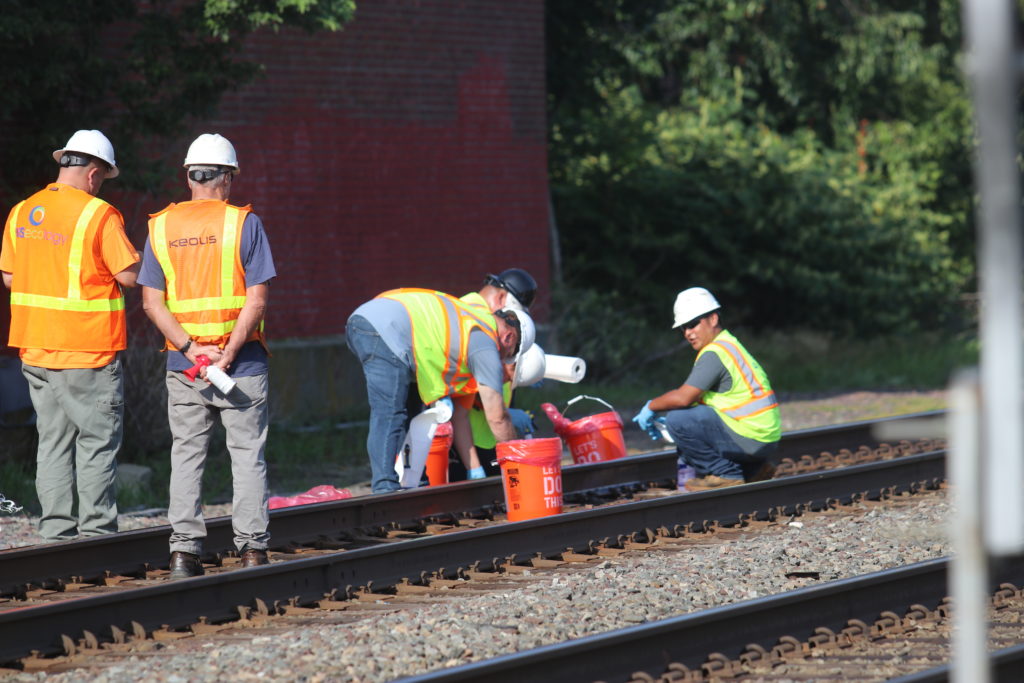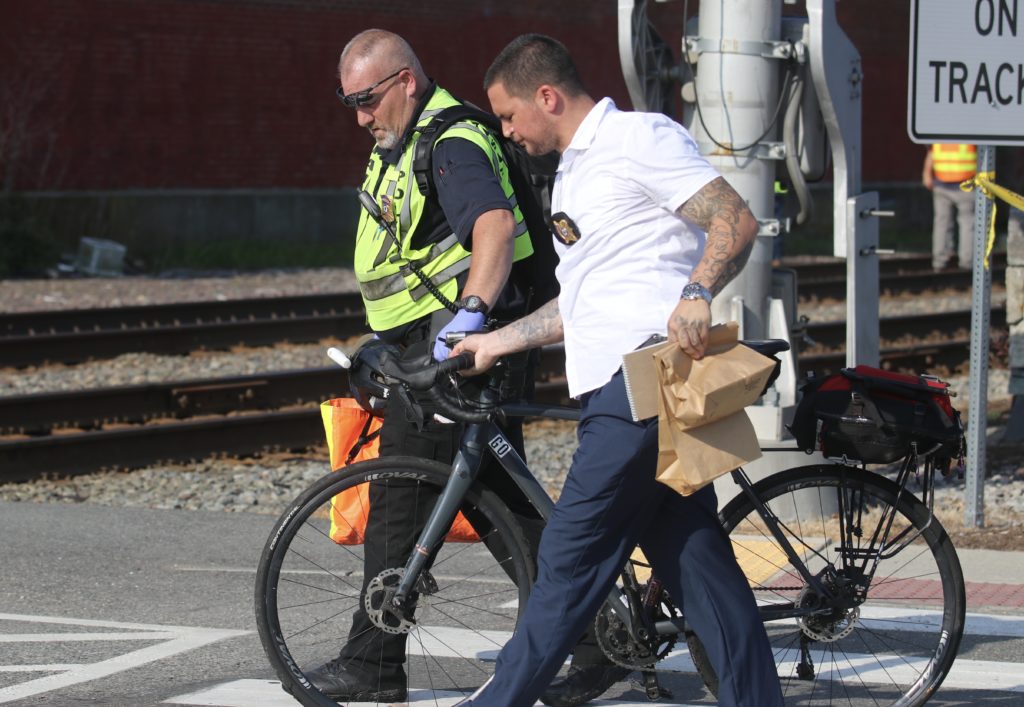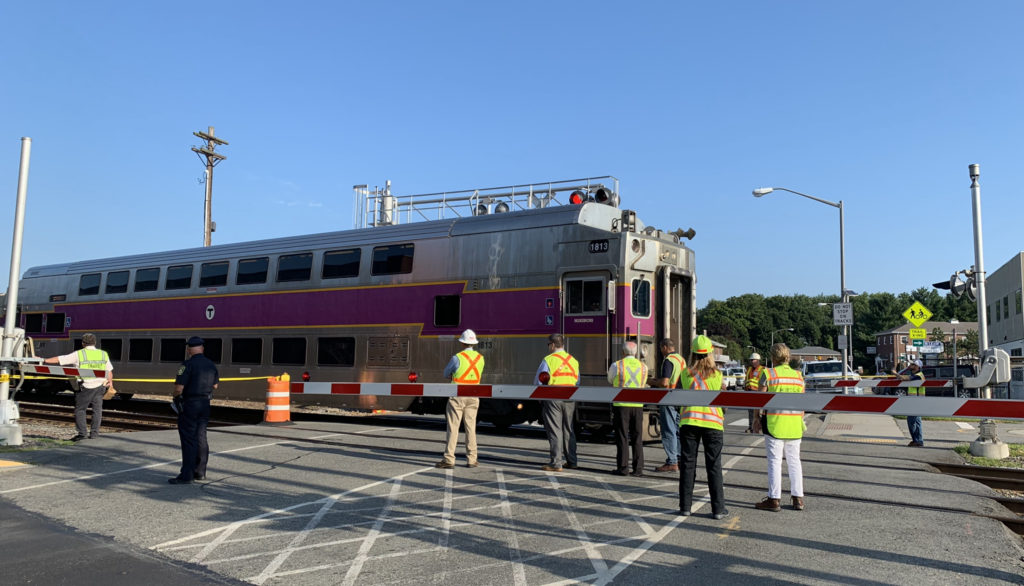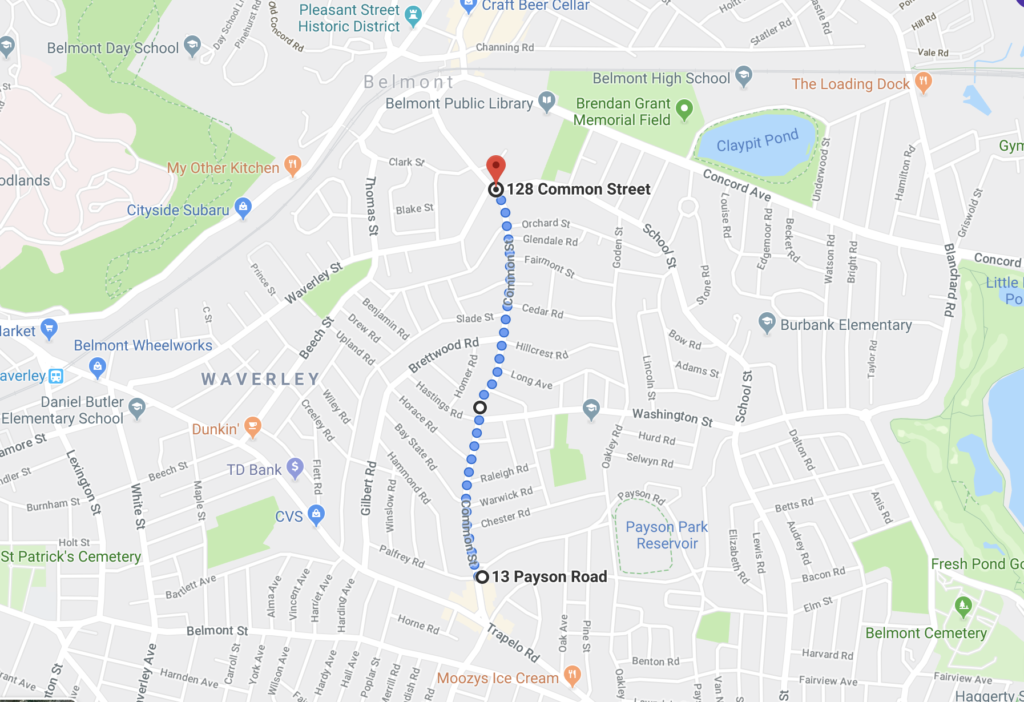Photo: A close up of the artificial turf at Harris Field.
A comprehensive “fact-based” report by a member of the Belmont Middle and High School Building Committee recommends the group move forward with the construct of a new artificial turf ground known as the “Rugby Field” adjacent to the Wenner Field House.
The study’s conclusions will be featured in a grass vs. artificial turf discussion at a public meeting being held by the Belmont Middle and High School Building Committee on Wednesday, Aug. 21 at 7 p.m. at the Beech Street Center, 266 Beech St.
Authored by Robert “Bob” McLaughlin, the report concludes that turf’s greater capacity to withstand year-round use and the field’s location in a shady corner of the new school necessitates building a turf ground instead of a grass field.
While a growing number of Belmont residents and parents of students are raised concerns that turf fields are connected to serious health and safety issues including alleged increase in cancer rates for certain athletes, McLaughlin reported that independent research overwhelming concludes there are no proven detrimental health effects from playing on artificial fields.
The field, to be built in 2021, will be used by the state champion boys’ and girls’ rugby programs, as a practice and playing site for sub-varsity sports and for three-seasons of physical education classes.
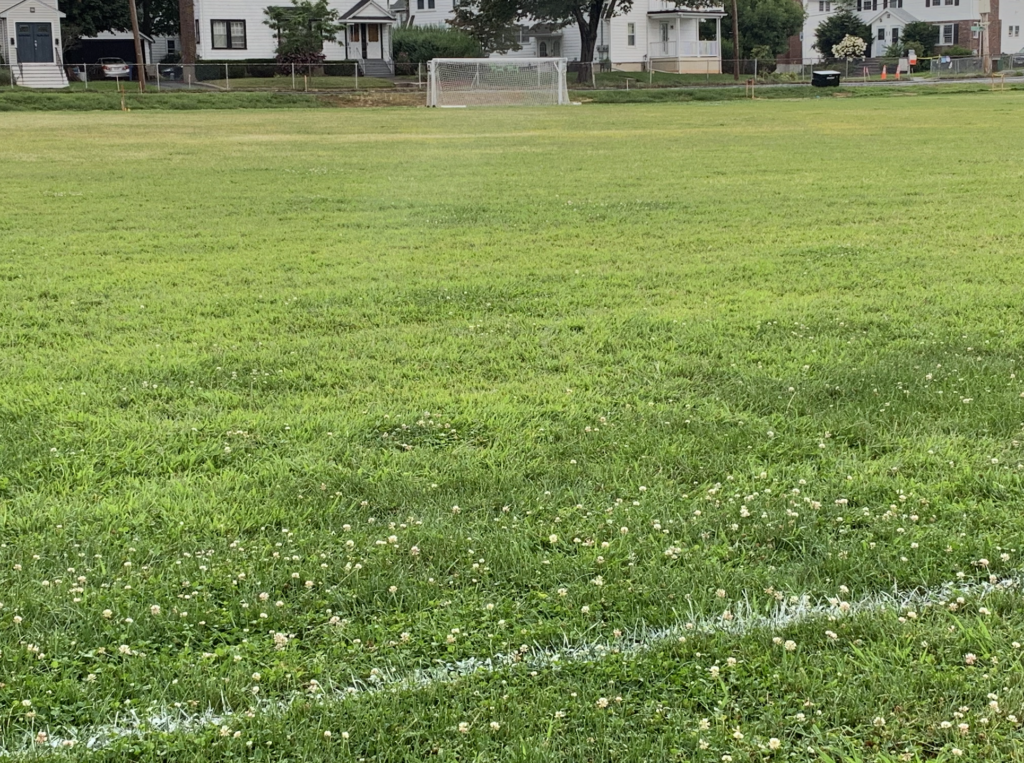
The Building Committee’s Chair Bill Lavello said McLaughlin, and School Committee Member Katie Bowen will speak on the issue before the public comments on the findings.
In his 35-page report, McLaughlin started by stating the obvious: Belmont doesn’t have enough playing fields to meet the demands of school teams and the town’s recreational programs with grounds crowded with school and club teams year-round. Currently each town field is used on average 482 hours in the spring and 290 in the fall above the advised limit of 250 hours each season to avoid stress and deterioration.
The town has pointed out in the past the expense of maintaining a healthy football/soccer-sized grass field at upwards to $100,000 annually as well as the loss of playing space as natural surfaces need to be “put to bed” for the following playing season (in the spring if games are played during the fall) to allow the grass and top soil to recover.
The school district’s Athletic Director Jim Davis noted to McLaughlin that turf fields can be used more often, require less maintenance and can be used by many sports without a loss of field consistency.
McLaughlin points to “many … studies” suggesting turf fields can be used “three times” more than natural grass without the wear and tear placed on a nature surfaces.
“The flexibility and increased usage available with artificial turf is vital to maintaining an acceptable athletic program for the now-expanded grades 7-12 enrollment on our limited school campus,” McLaughlin said.
But it is alleged health concerns to young adults and children that prompted the committee to request the study. The report was commissioned in June after a group of residents questions the safety of artificial grass playing ground at the school and in town.
McLaughlin acknowledge the worries from residents and people that turf fields are allegedly linked to cancer threats from the rubber infill – the small round pellets known as crumb made of ground tires – used in the majority of the 13,000 synthetic athletics fields across the US.
Yet McLaughlin could not find any evidence “in the plethora of studies” he researched that links the infill – which McLaughlin noted contains known carcinogens – to increased cancer rates among players who use the turf fields.
He added that just last month, the US Environmental Protection Agency issued a final report of a multi-agency study (dubbed the Federal Research Action Plan on Recycled Tire Crumb Used in Playing Fields and Playgrounds or FRAP) that concluded while chemicals are present in the crumb rubber, “human exposure appears to be limited on what is released in the air or simulated biological fluids.”
There are alternatives to rubber infill such as a cork and coconut mixture and quartz-based sand. Yet each has its own issues: the cork/coconut mix will “freeze” on the first fall frost and has a higher rate of abrasion injuries while field operators question whether commercial sand can stand up to a field under continuous use.
McLaughlin countered some of the health concerns by noting that physical activity during adolescence and early adulthood helping prevent cancer later in life and leading to a reduction in cardiovascular ailments.
While further studies assessing individual-level exposure is needed, [U]ntil then, however physical activity should be encouraged and promoted by year-round, weather resistant fields,” said McLaughlin.
Second, on the list of issues is elevated temperatures produced by a turf field, increasing temps 20 to 40 degrees F. Critics contend the super-hot grounds could prove a serious health condition especially for younger players.
Athletic Director Davis has informed town officials the “cushion” the turf lies on is coated white, which absorbs a great amount of the heat. Davis noted the overwhelming injury concerns at Harris Field are from possible concussions and ligament damage rather than heat. In addition, most high school practices occur after 3 p.m., once the hottest part of the day has passed.
Some residents who are opposed to artificial turf have expressed their goal of not just stopping the high school’s second turf field but also taking out the small field at the Wellington Elementary School and reverting Harris Field to natural grass when the current artificial turf is retired with the next decade.
Support for natural surfaces is growing around town. A few residents who attended a July public meeting on placing temporary lights at two town playing fields to support Belmont Youth Soccer said they would not allow their children to play high school sports due to the artificial turf surface.
Those health warnings associated with artificial turf prompted Connecticut legislators to sponsor a bill that would prohibit towns and school districts from installing new artificial fields. The measure remains in a legislative committee.
At a meeting last month, the Belmont Board of Health stated it may need to weight in on the matter.
It is not known if the Building Committee will vote after the discussion Wednesday on moving forward with a specific surface.
